Archive for July, 2012
Monday, July 9th, 2012 
2 of the wordpress installations, I take care for had been reported an annoying bug today by some colleagues.
The bug consisted in double trailing slash at the end of the domain url e.g.;
http://our-company-domainname.com//
As a result in the urls everywhere there was the double trailing slash appearing i.e.::
http://our-company-domainname.com//countact-us/
http://our-company-domainname.com//languages/
etc.
The bug was reported to happen in the multiolingual version of the wordpress based sites, as the Qtranslate plugin is used on this installations to achieve multiple languages it seemed at first logical that the double slash domain and url wordpress issues are caused for some reason by qTranslate.
Therefore, I initially looked for the cause of the problem, within the wordpress admin settings for qTranslate plugin. After not finding any clue pointing the bug to be related to qTranslate, I've then checked the settings for each individual wordpress Page and Post (There in posts usually one can manually set the exact url pointing to each post and page).
The double slash appeared also in each Post and Page and it wasn't possible to edit the complete URL address to remove the double trailin slashes. My next assumption was the cause for the double slash appearing on each site link is because of something wrong with the sites .htaccess, therefore I checked in the wp main sites directory .htaccess
Strangely .htacces seemed OKAY and there was any rule that somehow might lead to double slashes in URL. WP-sites .htaccess looked like so:
server:/home/wp-site1/www# cat .htaccess
RewriteEngine On
RewriteBase /
# Rewrite rules for new content and scripts folder
RewriteRule ^jscripts/(.*)$ wp-includes/js/$1
RewriteRule ^gallery/(.*)$ wp-content/uploads/$1
RewriteRule ^modules/(.*)$ wp-content/plugins/$1
RewriteRule ^gui/(.*)/(.*)$ wp-content/themes/$1/$2 [L]
# Disable direct acceees to wp files if referer is not valid
#RewriteCond %{THE_REQUEST} .wp-*
#RewriteCond %{REQUEST_URI} .wp-*
#RewriteCond %{REQUEST_URI} !.*media-upload.php.*
#RewriteCond %{HTTP_REFERER} !.*cadia.*
#RewriteRule . /error404 [L]
# Standard WordPress rewrite
RewriteCond %{REQUEST_FILENAME} !-f
RewriteCond %{REQUEST_FILENAME} !-d
RewriteRule . /index.php [L]
Onwards, I thought a possible way to fix bug by adding mod_rewrite rules in .htaccess which would do a redirect all requests to http://www.our-company-domainname.com//contact-us/ to http://www.our-company-domainname.com//contact-us/ etc. like so:
RewriteRule ^/(.*)$ /$1
This for unknown reasons to me didn't worked either, finally thanks God I remembered to check the variables in wp-config.php (some month ago or so I added there some variables in order to improve the wordpress websites opening times).
I've figured out I did a mistake in one of the variables by adding an ending slash to the URL. The variable added was:
define('WP_HOME','http://our-company-domainname.com/');
whether instead it should be without the ending trailing slash like so:
define('WP_HOME','http://our-company-domainname.com');
By removing the ending trailing slash:
define('WP_HOME','http://our-company-domainname.com/');
to:
define('WP_HOME','http://our-company-domainname.com');
fixed the issue.
Cheers 😉
Tags: annoying bug, assumption, Auto, care, cause, clue, colleagues, content themes, Draft, exact url, FILENAME, folderRewriteRule, GUI, HTTP, index, languages, mod, nbsp, Onwards, page, php, plugin, reason, referer, rewrite, RewriteCond, RewriteEngine, RewriteRule, scripts, slashes, something, standard, Strangely, url address, URLs, Wordpress, wp, WP-sites, www cat
Posted in System Administration, Wordpress | No Comments »
Saturday, July 7th, 2012 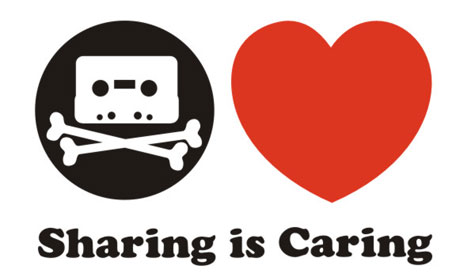
I've been thinking for a lot of time analyzing my already years ongoing passion for Free Software, trying to answer the question "What really made me be a keen user and follower of the ideology of the free software movement"?
I came to the conclusion it is the sharing part of free software that really made me a free software enthusiast. Let me explain ….
In our modern world sharing of personal goods (physical goods, love for fellows, money, resources etc.) has become critically low.The reason is probably the severely individualistic Western World modern culture model which seems to give good economic results.
Though western society might be successful in economic sense in man plan it is a big failure.
The high standard in social culture, the heavy social programming, high level of individualism and the collapsing spirituality in majority of people is probably the major key factors which influenced the modern society to turn into such a non-sharing culture that is almost ruling the whole world nations today.
If we go back a bit in time, one can easily see the idea and general philosophy of sharing is very ancient in nature. It was sharing that for years helped whole societies and culture grow and mature. Sharing is a fundamental part of Christian faith and many other religions as well and has been a people gathering point for centuries.
However as modern man is more and more turning to the false fables of the materialistic origin of man (Darwininsm), sharing is started seeing as unnecessary . Perhaps the decreased desire in people to share is also the reason why in large number people started being self-interest oriented as most of us are nowadays.
As we share less and less of our physical and spiritual goods, our souls start being more and more empty day after day. Many people, especially in the western best developed societies; the masses attitude towards sharing is most evidently hostile.
Another factor which probably decreased our natural human desire to share is technocracy and changing of communication from physical as it used to be until few dacades to digital today.
The huge shift of communication from physical to digital, changes the whole essence of basic life, hence I believe at least the distorted sharing should be encouraged on the Internet (file movies and programs sharing) should be considered normal and not illegal..
I believe Using Free Software instead of non-free (proprietary) one is another thing through which we can stimulate sharing. If we as society appreciate our freedom at all and care for our children future, it is my firm conviction, we should do best to keep sharing as much as we can in both physical and digital sense.
Tags: Auto, christian faith, culture model, Draft, economic results, economic sense, essence, fables, follower, Free, free software enthusiast, free software movement, gathering, individualism, keen user, Lack, Legal, level, love, majority, modern culture, modern man, money resources, movement, nature, nbsp, number, personal goods, philosophy, quot, reason, self-interest, sense, social culture, social programming, software, spiritual, spiritual goods, time, time one
Posted in Entertainment, Various | No Comments »
Friday, July 6th, 2012 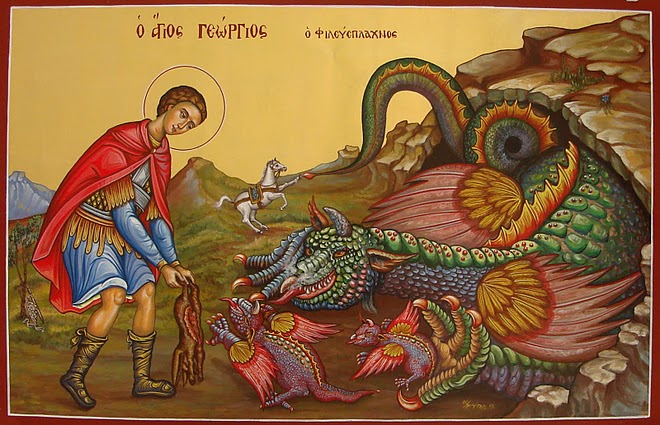
Saint George is one of the most venerated Orthodox Christian saints in the Eastern Orthodox Church. My interest in saint George is cause of the reason, I myself bear the name Georgi (the Bulgarian equivalent of George). Saint George is mostly venerated in the Slavonic Christian-dome.In almost all Church icons depicting st. George in Orthodox and Roman Catholic christiandome saint George is piercing killing a dragon.
One of the reasons, st. George is depicted piercing the dragon is a reference of st. George victory over satan, through his martyrdom.
The Beast (Dragon) on the iconi is a straight reference to the Holy Bible; Chapter Revelation also known under the name Apocalypse.
In revelation, we read humanity and our saviour Jesus Christ will finally once and for all will kill the "ancient beast" = (satan)
In same logic, as Saint Martyr George has been victorious over Satan by his unshakable confession of faith in Jesus Christ in early 5th century A.D. , we believe in the Orthodox Church he is given the crown of (eternal) life as a prize for bearing un-human tortures in the name of the of Christ.
To illustrate visually the victory of saint George over Satan through his immesurable faith confession with which he become, there is a an early tradition in iconography in the Church to depict st. George killing a dragon.
The other reason why saint George is depicted to kill a Dragon is due to a Lebanon / Palestinian ancient story saying; There was a huge Dragon living somewhere in nowdays Lebanon / Palestinian lands.
The beast created a huge havoc killing many people and systematically torturing people in the area.
As the Eastern Orthodox Christian tradition continues …. the Dragon is said to have inhabited one of the caves near some village.
Interesting, the story tells these very same dragon was the last Dragon crawling the earth before the final disappearance of dragons.
Many brave local people tried to kill the beast but many died as the beast was unbeatable.
Being unable to beat-up the dragon with a physical (human) force the local population turnted to God for help – saying continously prayers to Saint George to help them defeat their dragon mischief.
Soon after, Saint George appeared on a white horse and pierced the "old dragon / snake". The dragon liberation miracle is said to be evidenced by local people and according to Orthodox monk books is one of the many great miracles occuring in past times.
The report of the miracle has quickly spread around all Lebanon / Palestinian lands and soon, being confirmed as real spread along all Russia as well as the rest of the Slavonic and Orthodox Christian world (Bulgaria, Serbia), Greece, Egypt (Alexandria) etc..
To illustrate saint George's appearance miracle, monastic iconographers started depicting saint George as we see him until this very day – Riding a horse and slaughtering a monstrous beast.
Below are seven 12-th century early icons of saint Saint Great-Martyr George killing the dragon;;
I've collected the icons from various website online. Hope this collection will be blessing for all Christ brother and sisters and generally anyone reading this post:
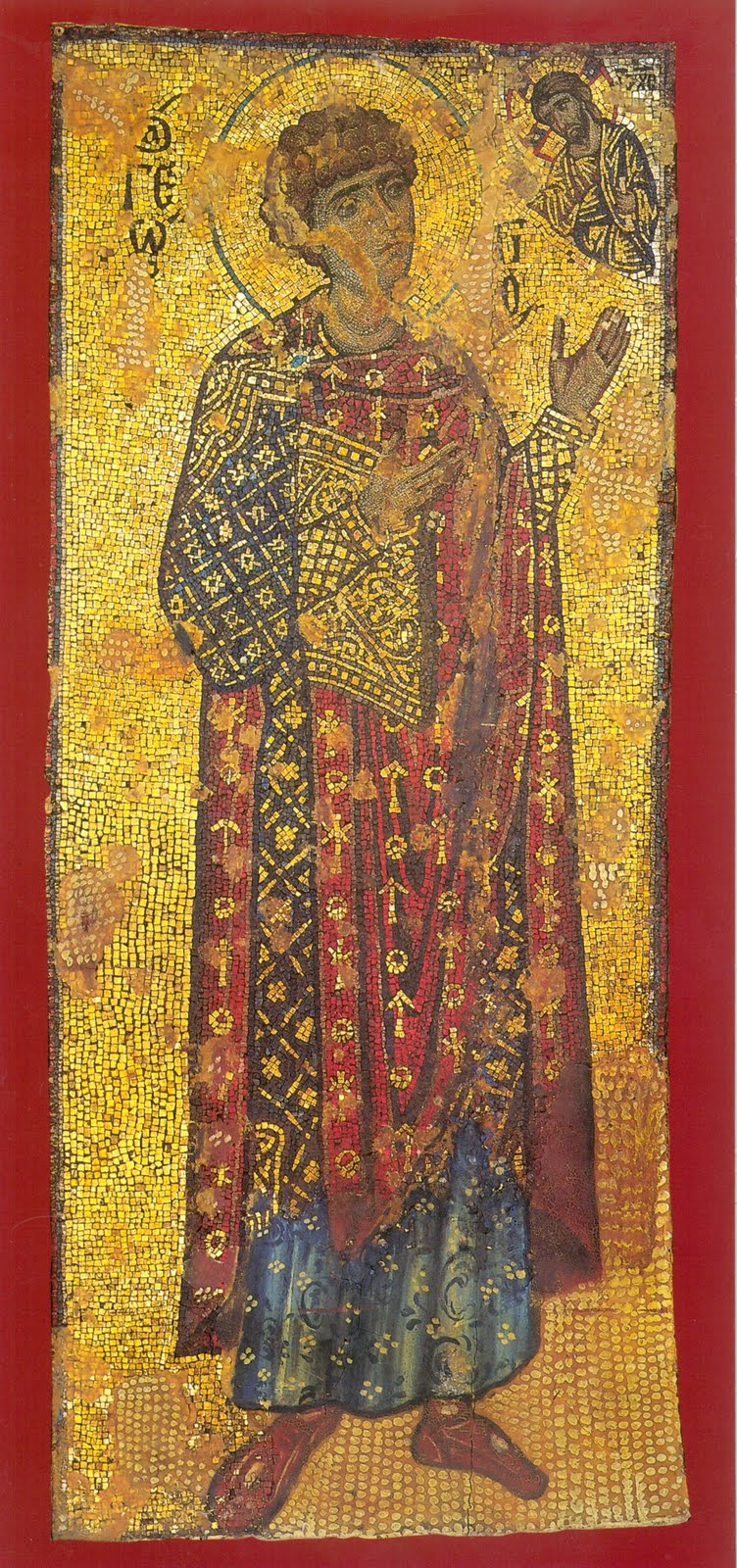
12-th century mosaic icon of st. George the Great Martyr Xenophontos Monastery
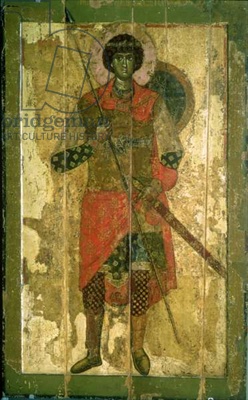
Orthodox Christian icon saint George dated to 1130 – 1150 A.D.
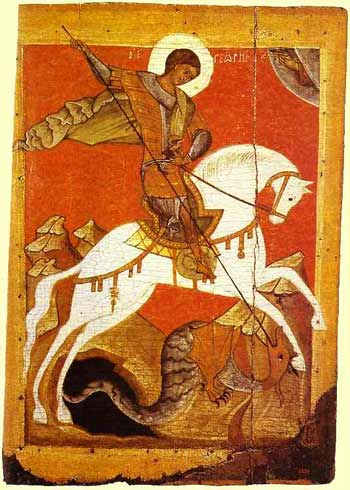
Saint Georgius the Dragon Slayer icon XII century orth icon
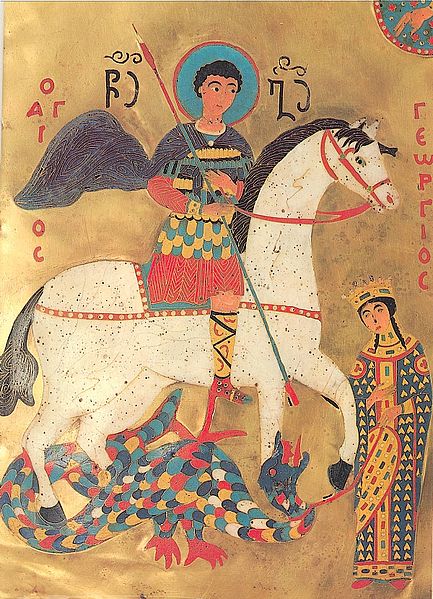
St. George Enamel icon Georgia 12th century
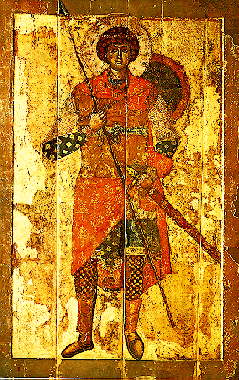
saint George Christian icon Yuriev Monastery Novgorod 12th century
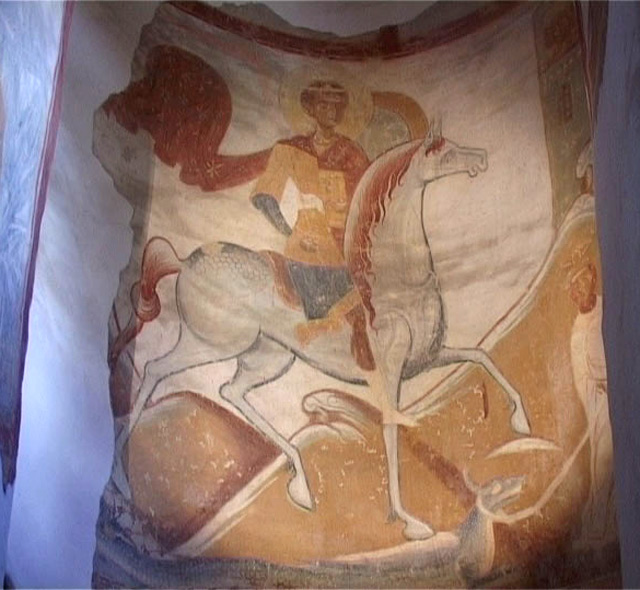
st. George Staraya Ladoga Orthodox Christian icon
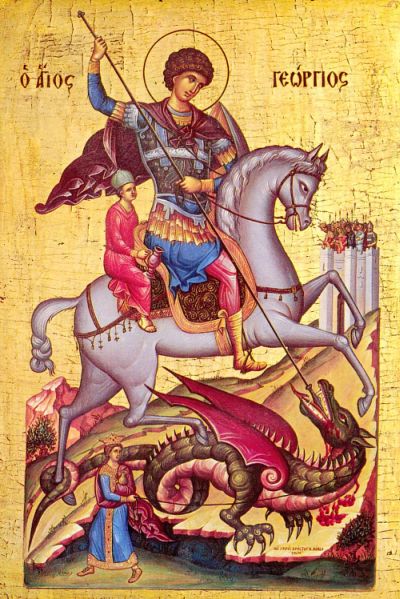
sv. Georgius 12th century Aios
Nowdays saint George Holy Relics particles are kept for veneration in many Orthodox Christian countries monasteries. Here in Bulgaria saint George Holy Relics are kept in a Monastery nearby the seacoast in Pomorie. Any Christian visiting Bulgaria have the opportunity to venerate the Holy in (Pomorie's Monastery – St. Great Martyr Georgi.
Tags: ancient beast, Auto, beast, bible chapter, Catholic, cause, christiandome, church icons, confession of faith, Draft, drago, dragon, eastern orthodox church, eternal life, faith confession, georgi, Georgius, havoc, help, holy bible, interest, jesus christ, kill, last, last dragon, Lebanon Palestinian, martyr george, martyrdom, miracles, Monastery, monk, nowdays, orthodox christian saints, orthodox christian tradition, palestinian lands, pomorie, quot, reading, reason, relics, report, revelation, Roman, Saint George, satan, saviour, saviour jesus christ, st george, story, tortures, victory, village
Posted in Christianity, Various | 1 Comment »
Thursday, July 5th, 2012 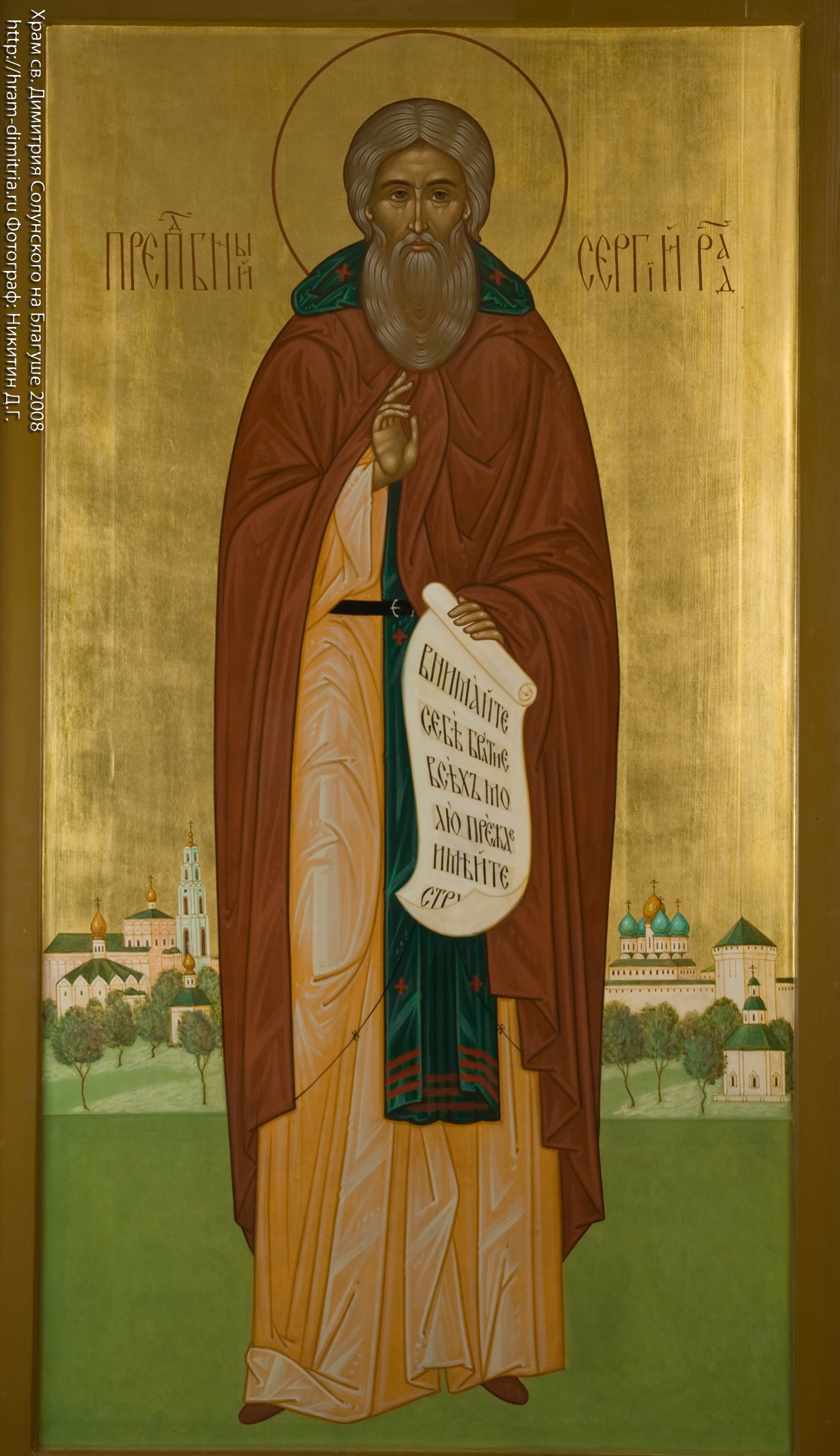
Now it is my 4th day being in Pomorie Monastery with Kimba. The monastic life is not so boring as I thought back in the days 🙂
Yesterday I was drived to the Kamenar pub, by one of the workers here in the monastery (with the monastic car an old Ford);
We went to the restaurant in Kamenar village with the blessing of the abbot has blessed that we go and enjoy ourselves for few hours there with a group of tourists staying for (1 or 2) weeks in the monastery.
The pub was quite a news for me as it was a nice looking place with a lounge and swimming pool, this seemed quite unusual for especially since it was located in a village with 200 or 300 hundred of people living 🙂
The village pub had even a billiard table, the coin price there was on the shocking 25 stotinki (0.13) euro cents! 🙂
In the pub came an orthodox priest dressed like a casual person and started singing some traditional old Bulgarian songs (typical for singing in the different regions in BG). The guy was really talented and his memory seem to be very strong, since he was able to sing by heart about 10 songs in a row !
Besides that the priest voice was very beautiful. When I later had a talk with the guy it appeared, he learned professional singing before he became an Orthodox priest some years ago.
What really shocked me when the priest started singing in Italian Luciano Pavaroti, he sang it so well so you can hardly find out if it is not really the real authentic Luciano voice 🙂
This priest and the overall people in the pub had a great fun, as the place and people in were quite spirited; Actually I felt in a while like being in Emil Kosturica's movie 🙂 🙂 🙂
Being over with yesterday I will say few words on my monastic experience today ….
The Church bell rang early in the morning to summit the monks for the early morning prayer followed by a Holy Liturgy served. The Holy Liturgy today served was a co-memoration of the feast of Saint Sergii of Radonezh.
Cause it is weekly day here there were not too many people in the monastic Church. The monastery monks were there,few other people and some Russian pilgrim woman. By the way I'm more and more being convinced that many of the Russian people are very pious oriented and have strong faith in God than us bulgarians. Sadly it appears (from my observations so far) Russians generally are richer in faith.
It is sad that Russian Orthodox Christianity is stronger than ours in Bulgarian, especially when we take the fact historically Russians have received the Orthodox Chrisitian faith and language from us Bulgarians …
One of the key figure (brothers) monks Father Sergii is having a name day here, so due to that and because it is not a fasting day today (Thursday), the traditional monastic dinner was bigger and more rich than usual. Some youghurt mixed with cucumbers (Tarator) as we call it in Bulgaria was served with a little salad a few pieces of Banica and even little meat balls (for people eating meat).
The Abbot of the monastery was not served meat as I heard from the cook lady he is completely abstaying from meat since about 10 years already; some of the monk brother didn't eat meat as well.
The dinner started about 12:20 in the usual dinner room. For another day the food in the monastery was tasting super-delicious.
It is rather interesting that the food here is more delicious than the food we usually eat at home; Probably the food is so delicious because large portion of the food on the table is monastic-grown and besides that a food blessing prayer is said everytime before eat time. Earlier times I've heard many others who visited and eat food in monasteries that the monastic food is tastier and more delicious than we ordinary people have on our tables, however I was sceptical until I experienced it myself, these days.
Cause the food is so tasteful, I consume here usually twice more food than I usually eat at home 🙂
I recommend anyone who didn't eat a meal in a monastery (yet) to try this at least once in a lifetime ;;;
Tags: Auto, billiard table, brotherhood, bulgarian orthodox church, casual person, church bell, coin price, different regions, Draft, euro, feast, few words, fun, heart, Holy, holy liturgy, kimba, kosturica, luciano, memora, Monastery, monastic experience, monastic life, monk, morning prayer, old ford, orthodox priest, person, place, pomorie, priest, Pub, Radonezh, row, saint, Sergii, singing, swimming pool, TABLE, village, village pub
Posted in Christianity | No Comments »
Wednesday, July 4th, 2012 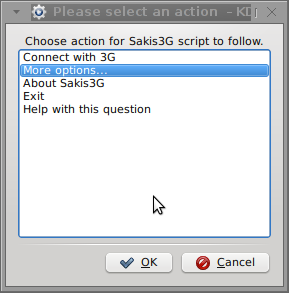
I've been given a HUAWEI Mobile Broadband E173 USB 3g model. The USB modem contains a flash USB Storage segment storing a little install program dedicated to make the modem work fine on Microsoft Windows XP / Vista / 7 and probably other M$ OSes. I'm a long time DebianGNU / Linux user and as a free software enthusiast I ofcourse wanted to be able to use Vivacom's 3G USB Modem on my Linux powered notebook.
Thanksfully as I've red on Vivacom's website the modem supports Linux OS 🙂
For those unaware in Bulgaria there are currently 3 major GSM network providers providing 3G internet this are;;;
- VIVACOM – The ex Government ran national company BTC (Bulgarian Telecommunication Company)
- M-Tel – The first GSM network provider that entered Bulgaria around year 1995
- GLOBUL – The 3rd and last GSM mobile and net provider entered last and not so much used by Bulgarians today
Until today I had no experience in running any 3G modems on Linux, neither I had used the 3 networks 3G internet to determine which one is best, however I've been given for temporal use a VIVACOM 3G internet modem today so I proceeded to try installing it on my Debian host.
My Linux system is a bit strangely configured as I use wicd network connection manager -( wicd-gtk ) to manage wireless and LAN connections instead of the standard installed GNOME network manager – available through package ( network-manager-gnome ).
The reason I use wicd is not that it is so much better than GNOME network manger but rather for historical reasons because few years past I had impression it works better in connecting me to wireless networks. Another reason why I choosed wicd back then was the nice looking stats …
I tried plugging in the Vivacom USB 3G modem stick and checked in wicd to see if I can see a possibility to connect to the mobile opeartor 3G network but unfortunately nothing appeared.
Though the 3G adsl modem was unavailable straing in wicd, checking about it in the list of attached USB devices I could see it detected, e.g.:
noah:~# lsusb |grep -i huawei
Bus 001 Device 007: ID 12d1:1c05 Huawei Technologies Co., Ltd.
This was at least a good sign pointing me to the thoughts that the modem is probably gonna work.
I did a quick Google search to see if other people succeded running the device on a Linux host and came across a few blog posts in Bulgarian explaining a "success story" on Ubuntu Linux through using a tweakened shell script – sakis3g. For more on how the script works and script download check out Sakis3g
Here is a quote from sakis3g's website describing the script:
It automagically setups your USB or Bluetooth™ modem, and may even detect operator settings.
You should try it when anything else fails!
Sakis3g has different versions designed for for plenty of spacific hware architectures i.e. for (i386, amd64, armv4t, armv5t).
There is also a version of the script which by the way contains a combination of bash shell scripting instruction and some binary exec data.
To run sakis3g on my laptop I did:
1. Download sakis3g
My notebook architecture is 64 bit so I download and used the amd64 version of the script;;;
hipo@noah:~$ mkdir sakis3g
hipo@noah:~$ cd sakis3g
hipo@noah:~/sakis3g$ wget http://www.sakis3g.org/versions/latest/amd64/sakis3g.gz
I've made also a mirror of sakis3g i386, 64 bit and all architecture the mirrors just in case it disappears in future. The mirror versions of sakis3g are here:
a. sakis3g i386 b. sakis3g amd64 c. sakis3g all architectures source
2. Unarchive and make it executable
After downloading it as it is in gzip I had to do the usual de-gzipping and making the file executable;;;
hipo@noah:~/sakis3g$ /bin/gzip -d sakis3g.gz
hipo@noah:~/sakis3g$ chmod +x sakis3g
The script is then ready to run by either clicking twice on it or (as I prefer for debugging reasons to run it in terminal):
hipo@noah:~$ ./sakis3g
Something that I have wondered a bit was the dialog where I had to fill in some data of some variable APN abbreviation for – (Access Point Name)
The APN host for VIVACOM mobile internet is;;;
APN: internet.vivacom.bg
I've used the Windows configuration progrma to gather also the following data that I thought might be important for configuring the 3G adsl modem on the Linux host;;;
Auth: *99#
User: VIVACOM
pass: VIVACOM
Here are all the configuration screenshots I've taken from sakis3g and all the data that I filled in.
Next the following tiny window appeared on screen:

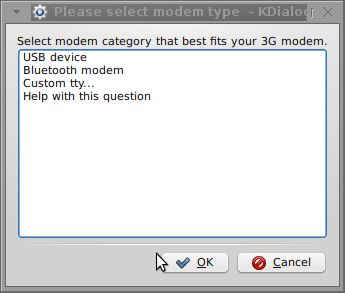
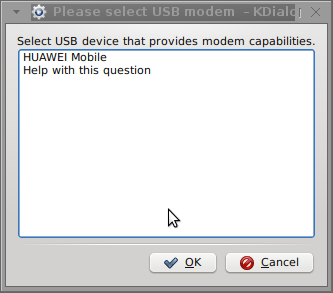
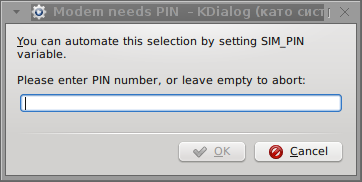
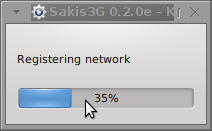
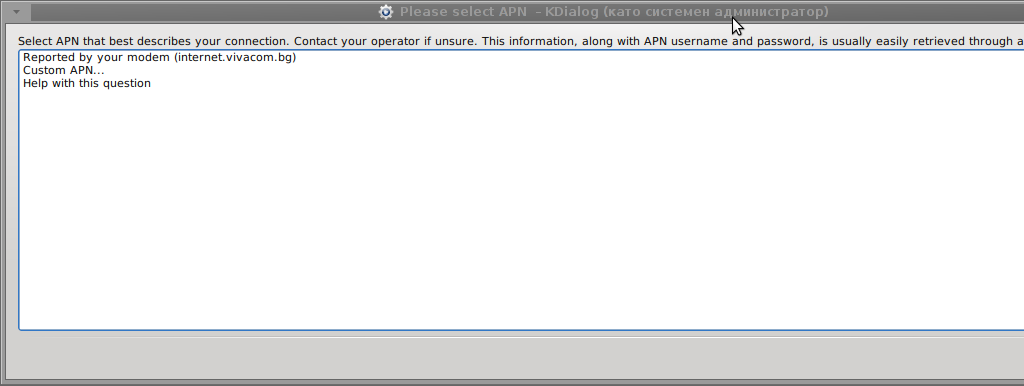
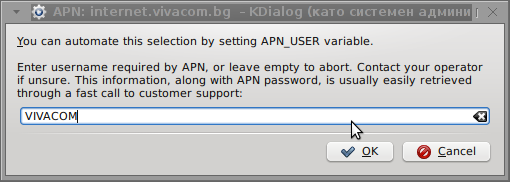
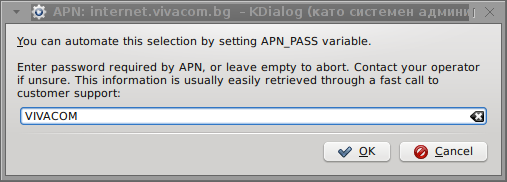
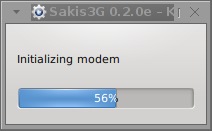
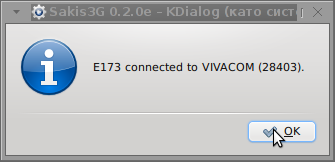
Well that's all folks, now sakis3g succesfully connected to the I_net via an (PPP) VPN connection tunnel here is data from ifconfig command showing the succesful 3G connection to VIVACOM;;;
noah:~# /sbin/ifconfig ppp0
ppp0 Link encap:Point-to-Point Protocol
inet addr:10.58.146.232 P-t-P:10.64.64.64 Mask:255.255.255.255
UP POINTOPOINT RUNNING NOARP MULTICAST MTU:1500 Metric:1
RX packets:2066 errors:1 dropped:0 overruns:0 frame:0
TX packets:1609 errors:0 dropped:0 overruns:0 carrier:0
collisions:0 txqueuelen:3
RX bytes:2232058 (2.1 MiB) TX bytes:341693 (333.6 KiB)
The internet via the 3G connection is not blazing fast but good enough to check your mail or read some webpages. VIVACOM currently has different (traffic limited packages) for their 3G internet, I'm not sure which package exactly is the 3G USB stick modem but probably the "quick" internet connection that is now would slow down once the traffic limit is reached …
Hope this post helps someone to configure 3G internet on VIVACOM in Debian and Ubuntu Linux. Though I've tested sakis3g on Debian it should work with no hassles on any other GNU Linux distribution that has bash installed.
Tags: adsl modem, architecture, Auto, bulgarians, configure, connection, DebianGNU, download, Draft, Flash, flash usb, free software enthusiast, Gnome, GSM, gsm network, gzip, host, internet modem, lan connections, linux system, m tel, manager, microsoft windows, Mobile, modem work, modems, nbsp, network provider, network providers, Point, quot, reason, segment, Shell, software, telecommunication company, time, Ubuntu, usb internet, usb modem, wicd, wireless networks, work
Posted in Linux, Linux and FreeBSD Desktop, Various | 3 Comments »
Tuesday, July 3rd, 2012 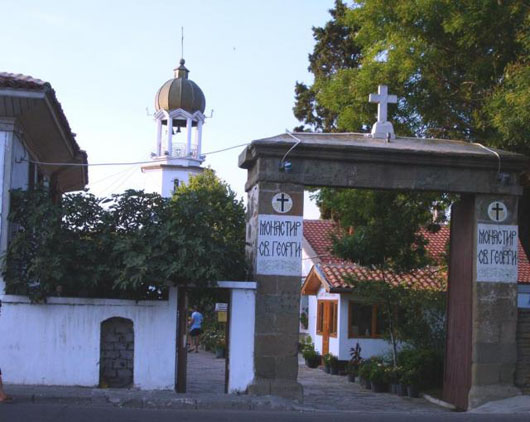
I'm currently once again on a pilgrimage in Pomorie Monastery St. George (Bulgaria) – EU as you should read in my previous day post. The brotherhood here is very hospital, since our coming (with Kliment), we were treated like being a part of the monks community. We're given food and allowed to eat together with the monks on one table and even we can enter into some of the interesting discussions after food :).
The life in a monastery is actually quite fascinating, though on the outside it seems boring.
As a general rule monks eat a meal twice a day. On Monday, Wednesday and Friday, the meals are cooked and served usually without oil (except if the Abbot didn't bless differently). The abbot in the Monastery is like a King. The order in the whole monastery resides very much a Kingdom, where the abbot is king some of the monks are his (left and right hand and counselors) etc.
Just like in kingdoms, there are workers who help the kingdom to flourish. With the case with the monastery workers are (mostly believing people) hired (with a wage) to help with the monastery works.
The kitchen "district" has a (chef) cook lady, person/s (usually believing Christians) who help with cooking cutting and vegetables and various meal preparations etc. and serving the brotherhood and workers dinner and lunch. Oh yes I almost forgot, monks didn't eat breakfast. Their usual first meal is like 12 or 12:30 as a straight dinner.
As in Other Orthodox monasteries, here in Pomorie Monastery the monastery is named after the heavenly protector of the place Saint Martyr George.
The brotherhood life here is not as tough as the monasteries located in desert destinations, though just like in other mountain situated Orthodox Christian monasteries the monks has an established everyday Morning and Evening Church Service.
The morning Church service usually starts around 06:00 or 06:30, while on a feast days like Sunday (The Day of Resurrection of Jesus Christ) the service starts a bit later in 07:00 or at very special occasions in 07:30 …
The Evening Services usually start around 04:30 or 05:00 o'clock and continue (depending on Church calendar feast day (saint)) from 30 to 40 minutes up to 2, 3 hours (in biggest feasts or fasting periods).
All the monks should be present on Morning and Evening service, where a bell is rang whether the monks has to gather together for a Church service prayer.
As of time of writting officially Pomorie monastery has 4 monk brothers. One is the Abbot, the abbot's left hand, one other hiero-monk who sometimes is serving the Holy Liturgy church services and another monk who is in his 70s and is mostly doing Church book readings.
Occasionally the brotherhood accepts a novice pupils who want to enter the monastic life, but as long as my observations goes (during the few years I came as a pilgrim here) many of the novices find the monastic life for them and quit after a few months or a year time.
Just a year earlier the brotherhood, here had 6 monks. Unfortunately the oldest monk Father Tikhon who lived inside the monastery more than half of his life (40 years in the monastery W0W!) passed away after a short sickness and hospitalization.
Another one of the monks (Father Joanikius) was transferred by the Sliven's Metropolitan (named also father Joanikius) to serve his monkship (obedience) in our Bulgarian Monastery situation in Holy Mount Athos (Greece) , e.g. to Zographus monastery.
The Abbot of the monastery (Father Yierotej) is a young and energetic person (35 years old) with a good sense of humour and a great God given wisdom grace and joyful temper.
Besides the core monks brothrehood currently the monastery has 5 workers and about 5 to 10 persons (people who are in hardships and have no place to stay) and were accepted to get a healing and a life stabilization while living for a while in the monastery. Some of those people are almost full time living inside the monsatic walls helping with their knowledge and talents to the brotherhood
The overall number of people who inhibit the monastery is about rawly 15 people.
All this people are given free meals 2 times daily and eat together often either in the monastic kitchen or the dining-room (which is also serving as a guest room).
Before and after each meal intake the people gathered together in the dinner-room pray together asking Jesus Christ to bless their food and drink. Usually the Abbot whenever on the table is the one to ask God for a food blessing. After the meal is complete the Abbot or some of the monks says a thanksful prayer thanking Jesus for giving the daily bread and asking God to give us also the heavenly spiritual food.
The most common food eaten here is vegetables and fruits and in non-fasting days they eat some youghurt, cheese or fish. Eating meat however is un-common and most of the food consumed is fasting food (meat is considered inappropriate food for Orth Christian Monks).
The monastery is surrounded by a around a meter monastic walls. In the middle of the monastery is located the Monastic Church Saint Martyr George whichs basic walls dates back to the distant XIX century.
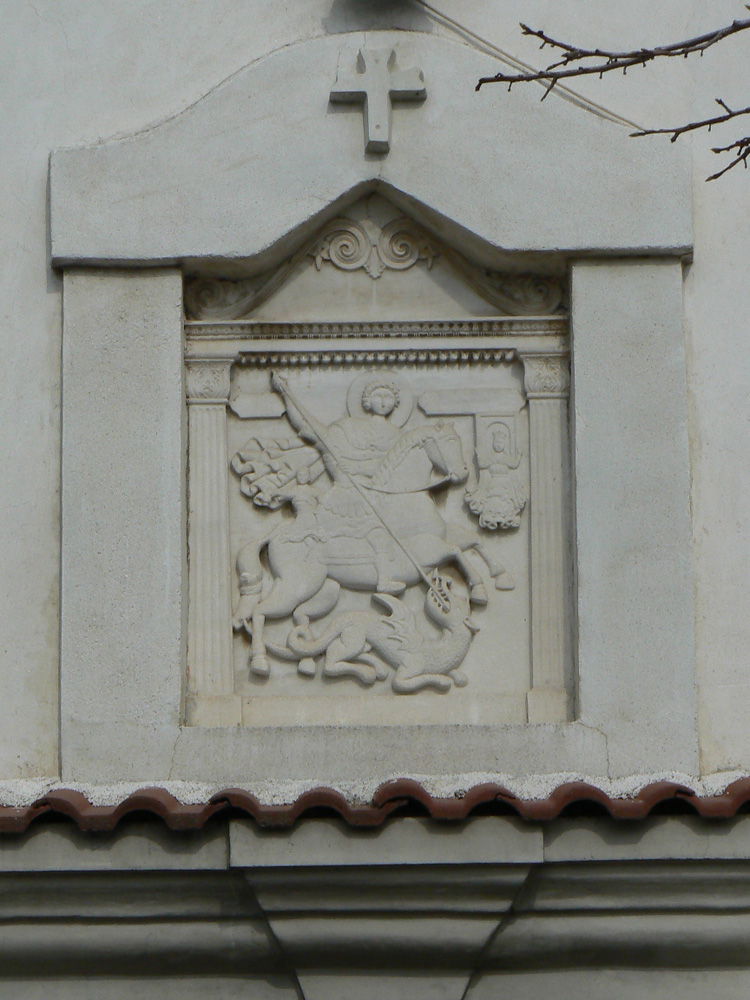
Facing the church about 40 meters from the Chuch are located the monks dwelling rooms also in monastic language called (cells). The monk's cell is full of icon and holy water, crucific crosses and all kind of faith related books so in a sense the monks room looks like a tiny Church.
Right in the middle of Pomorie Monsatery there is a holy spring – disease healing water which by God's providence healed the first Abbot and beneficient of the monastery (ironically the Turkish Abbot Salim Bey who converted from Islam to Christianity and donated all his land to the Bulgarian Orthodox Church in the 18 century when still Bulgaria was enslaved by Turkish).
The monastic yard is filled with green beautiful Peach and Plumb Trees. In the monastery yard they have sew of; potatoes, tomatoes, corn and few other "basic" self-grown. vegetables.
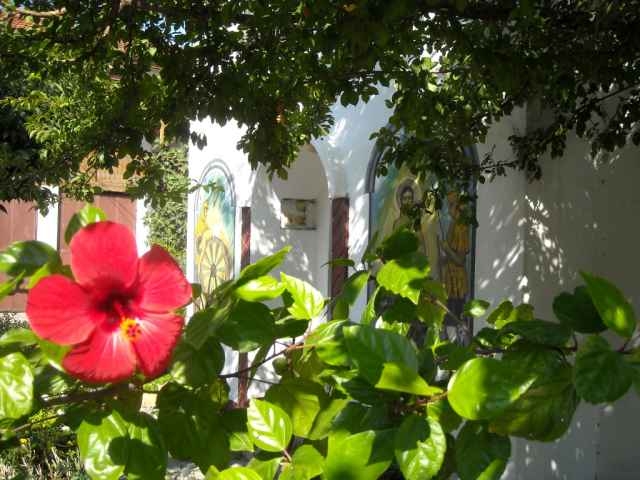
Along with the plants in one of the corners near the monastic wall there is a henhouse where some chickens and few turkeys are grown for getting fresh (natural) eggs.
In the old days the brotherhood was growing all their food by themselves as it was a tradition in the Monasteries, however with the changing times and the huge decrease of monks, growing all the monastic food on their-own became an impossible task ….
The monastery is mainly living on pilgrim or local believing people donations and the monastic land, as well as to sales of Orthodox icons and tiny faith related objects (crosses, holy bibles, church related books and literature) etc.
As I hear from some of the monks the harsh economic situation and severe world crisis that is plaguing the world also has a negative influence on the financial balance of the holy cloister too.
A monk shared with me the financial expenses of the monastery tend to be "dangerously" growing lately as the amount of people whose the brotherhood is feeding and taking care (healing) daily along with the money for restoration works are raising and the monastery experiences a shortage of money.
Still they're not discouraged but as I was told praying and hoping on God's grace to send them kind heart donators to help the monastery.
On Pomorie Monastery's website there is an e-PayPal donation form through which willing donators can help financially the monastic community
Most of the people who are in the monsatery not for a theraupetic reason (with a severe disease) work all day long. Though the work seems to be never ending here, one feels calm, relaxed and gracious.
Even staying for few hours here, makes you filled-up with God's grace and gives you new energy and hope to continue the harsh daily stress filled life.
Besides the Monastery the town of Pomorie is also very beuatiful and have all the facilities and entertainment a tourist might like to have from a modern beach resort. Yesterday I went and had my first beach time here in Pomorie.
Something interesting I noticed on the beach is the sand color which here in Pomorie is a bit blackish. The sea coast here near the beach is not big but feels cozy and there are bars near the beach shore, so anyone wanting to enjoy some of the world goods too can have a fanastic time here 🙂
Tags: Auto, brotherhood, chef, chef cook, christian monasteries, christians, cook, counselors, desert, Draft, evening church service, Father, feast, feast days, King, Kingdom, kingdoms, lunch, martyr george, meal preparations, Monastery, Monday, monk, Monks, morning, morning and evening, Mountain, orthodox christian, orthodox monasteries, Other, person, pilgrimage, place, pomorie, quot, saint, Service, st george, time, vegetables, Wednesday, year
Posted in Christianity, Everyday Life | 1 Comment »
Monday, July 2nd, 2012 
I've been 28 years old and for good or bad never travelled hitch hiking. Today however with a friend of mine Kimba thx God I lived to experience what it is like to stay on the road "begging" people to take you on their way to somewhere.
I always wanted to hitch-hike as a youngster but my restrictive controlling parents was too vigilant not to let me have my personal freedom and try hitch hiking. Now as I've grown "old" I have the freedom to do it and I'm glad I could. For sure it is better to do something you always wanted later than never 🙂
We took the "STOP" from a place few meters away from the "scratching sign" indicating the end of Dobrich city area – located about 4 / 5 km from Dobrich center. To come to the well known hitch-hiker's place (which my friend Kimba) knew pretty well since he travelled probably more than 20 times hitch-hiking.
To reach the hitch-hiker place we walked about 1 hour which in the early morning (07:50 to 09:00) came to be quite refreshing.
About 09:00 we started doing the well know hitch hiker gesture to beg traveller to take us 🙂
It felt quite unconfortable and a bit like begging to be on the road waiting for somebody to pick you up on the other hand it felt very challenging as it seemed to be a good "exercice" to raise up self-confidence. We were lucky and we didn't met any drivers to mock us with gestures or car beep. Besides that we only had to wait less than 20 minutes (probably 18 mins) until a car stop and ask her for our direction.
The driver seemed had to travel close to Aksakovo (a small village like town 1 km far from beginning of Varna and just few km away from the city center).
He pick us up and as we go he happened to be a familiar person which I've seen many times in the (International College Albena) where I previously studied.
The guy happened to be a merried for the librarian of the college. We had a nice chat in his car about Bulgaria before in communism and now and who is doing what (which I guess is quite normal) for hitch-hikers. As he drived a very funny scene appeared as we saw a donkey leading a cart full of wood running on the road. Now you might wonder what would be funny of a rural donkey with a cart full of wood, well the cart didn't have any person leading it. It seemed the donkey run away scared by a truck or a noise so the person leading the cart either fall somewhere on the road or the donkey had untight itself and took the direction to its home place 🙂
… Our hitch-hiking plan was to travel from Dobrich to Varna (if possible or the closest village or suburb), then we aimed to take a bus from Varna or somewhere nearby to the city center and from the city center to Travel to the so called (Asparuh's bridge / (Asparuhovia Most) – which is a common hitch-hike waiting and pick-up destination).
As we were left in Aksakovo by the driver, we were lucky to have a close bus stop near us. We went to the bus stop and we only had to wait about 8 minutes until the next bus driving to Varna city center arrived. We pick up a bus number 207 and travelled 'safely' to the city center (on the price of 1 lv per ticket). So our overall travelling for both of us instead of 10 lv (5 lv per person bus tick) costed only 2 lv 🙂 Along with the low price for travelling the hitch-hiking was also very healthy as we had a long walk to the place to depart from and after that had a small walk to pick up the bus to Varna. We made a mistake to not go out of the 207 bus near Varna city center Cathedral but two stops earlier, so we also had a small 15 minutes walking to the Cathedral. As we were not sure which bus we need to take to go to Asparuhov's bridge, we asked few people on the city center. We were told we need to pick bus number 2 or 17 (IIRC).
Eventually as we're waiting near the bus station where the bus-es leading to Asparuhovo stopped, we came to meet a taxi driver driving people to Asparuhovo on the price of a bus ticket (1 lv). In 5 minutes time, again obviously by God's might intervention the driver was able to collect 2 more people so he offered that we all immediately travel. The taxi-st left us on a place a bit after Asparuhovo's bridge which was the common place for hitch-hikers. We had to climb a little hill like place and walk a bit on the highway on (the car damage and wreck area). Very near us was a police car waiting to catch violators of speed limits. I didn't know about this very moment that Hitch-Hiking in Bulgaria is considered illegal!, happily I found this sad fact not by the police man but from Kliment (Kimba). The policeman did not stop us as we found a way to walk through a place which is bit far from them. Kimba choose a place and we started doing the hitch-hiker "PLEASE STOP AND TAKE US" gesture once again (actually the as Kimba was a professional in hitch-hiking he was mostly doing the hitch-hike sign.
There we had to wait about 40 minutes or so until, a good man with a small bus carrying some paper palettes stop and took us.
Thanks God he had to travel to Jambol to deliver the palettes so his travel route passed by near Bourgas (and respectively Pomorie). We had a an intimaditing chat with the person by which I found out he seem to be having many money issues and a lot of debts (just like many of the people in BG nowdays). Unfortunately he shared that just like a lot of us the common people in Bulgaria he is underpaid and often even though he works extra in Saturdays and Sundays it is almost impossible for him to pay his rent, food and family expenss …..
As the conversation progressed, he asked us where are we going if we're going to find a work and I told him we're going to be guests and pilgrims to Pomorie Monastery and in the mean time help the monks if there is work to be done….
It was a pleasure for me to meet such an honest bulgarian middle aged man, which also was good enough to pick us up. The time passed quite quickly as we shared some of common living joys and griefs. The bus quickly approached pomorie so we left us and we split. As I was thankful to the guy and felt pity for his bad life misfortunes and I wished in my mind that God bless, help him and return him for the good deed he done to pick us up.
We were now only 2 km from Pomorie entrance so to the monastery we had to walk only about 4 or 5 more kilometers. On the gas (oil) station, where we were left a fun story happaned as the computers counting the gasoline stopped working. People who filled the car tanks with Gasoline had to wait until someone comes and fixes the computer, neither nobody can purchase anything from the station (a snacks, a coffee, even a bottle of water) was impossible to buy. We stayed on this little station (Petrol) located just 2 km from Pomorie for 20 or 25 minutes and in this time this people who couldn't pay for the gasoline had to just hang up there loosing their time waiting for someone to fix the BUGGED PC ,,,
This scene has once again confirmed my theory that computerization is not always necessery a good think and the over-computerization of everything as the trend is nowdays could create a lot of time lags in many places and often create a great havoc if systems somehow reject working as planned ….
Anyways to be sure which way to walk to Pomorie Monastery we had to consult few local people. Nicely the road leading to Pomoriiski Manastir was easy we just had to walk straight and then turn right. Actually the monastery bell tower is visible on the way so it is not likely that anyone walking straight will not notice the tower which is taller than other one or two stage housed highed buildings.
We came to the monastery and by Gods grace as we asked previously the abbot for a blessing to come to the monastery, they were expecting us.
Immediately one of the persons serving in the monastery gave us a room. I asked for the abbot and we found him in his Abbot place and gave us a blessing. That's the over of my first and hopefully not last great hitch-hiking adventere. The moral from my trip is:
To sum it up, if you never tried stopping on a highway give it a try! 🙂
- hitch-hiking is a great must experience in a life-time thing;
- Obviously we were lucky and it is always a great think to travel with an Abbot blessing
- Hitch-hiking in Bulgaria is illegal, so there is thrill in doing it 🙂
- hitch-hiking could be a very healthy initiative
- Hitch-hiking is a great raise up and experience new random people self-confidence exercise 🙂
Tags: albena, Auto, beep, Bus, Cathedral, center, city, college, controlling, controlling parents, dobrich, donkey, Draft, exercice, experience travel, freedom, gesture, gestures, good, hiker, hiking, hitch hike, hitch hiker, hitch hiking, kimba, merried, Monastery, person, personal freedom, place, police, self confidence, something, thx, ticket, travel, travel notes, traveller, varna, village, wood, youngster
Posted in Everyday Life, Various | 1 Comment »




















